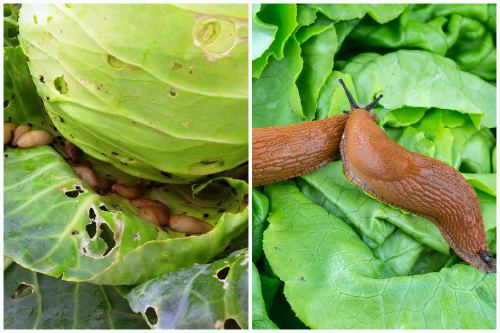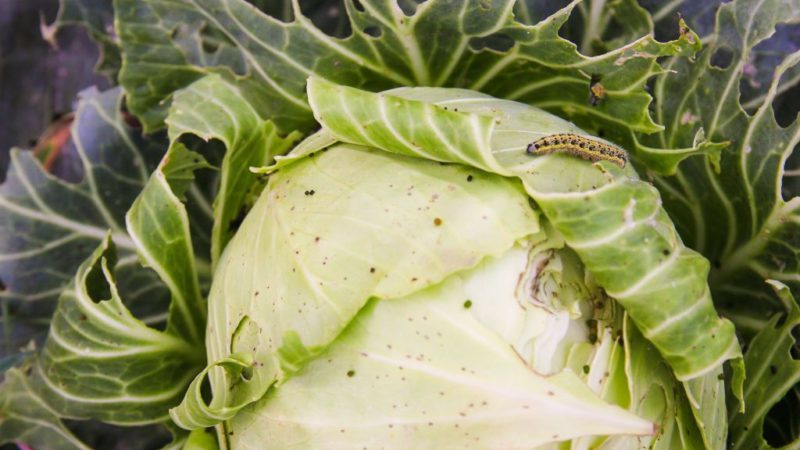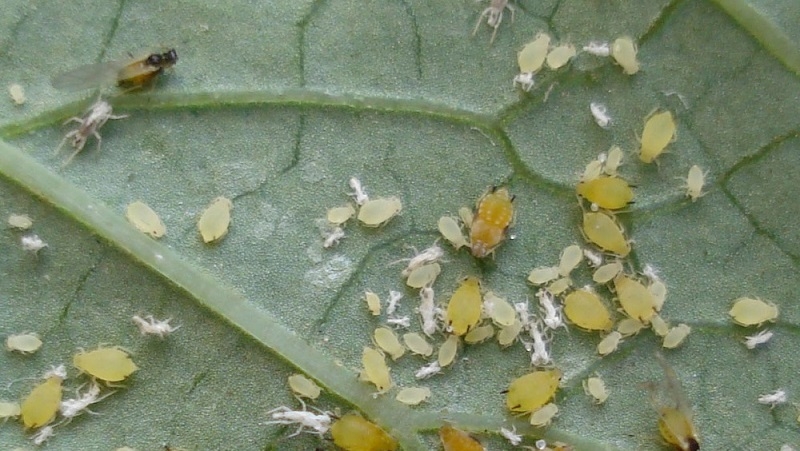How to dilute ammonia and treat cabbage with it from pests
Cabbage is loved not only by humans, but also by aphids, bears, bears, butterflies, snails and slugs. Insects spoil the heads of cabbage, reducing the yield. For opponents of chemicals, ammonia-based products were invented. They are absolutely safe for humans, but pests are unlikely to please. The main properties of the substance are repelling insects and saturating cabbage with nitrogen.
The content of the article
Is it possible to process cabbage with ammonia
Spraying heads of cabbage with ammonia is not just possible, but necessary.
The substance has some features:
- Saturates plants with nitrogen... Its lack turns into the following problems: the leaves become faded, dry quickly and stop growing, while the cabbage does not form a head of cabbage.
- It repels pests. Their larvae develop in the root zone of the bush. Timely use of tinctures based on ammonia will help preserve the harvest.
Nitrogen in ammonia is absorbed by plants much faster than in standard organic dressings. But you should not abuse its amount, since the opposite effect will be found: cabbage will accumulate nitrates that are dangerous to human health.
How to treat cabbage with ammonia from pests
A sad picture eaten by caterpillars leaves are watched by every gardener. Bears, slugs, aphids, white beetles, cruciferous fleas, scoops, cabbage moth larvae are not averse to heads of cabbage.
Correct use of ammonia will allow you to cope with insects and prevent their reappearance.

What pests helps
The substance effectively destroys the larvae of the whitebird butterfly, caterpillars, slugs, snails, aphids, and bear... After the first treatment, a small part of the larvae disappears, so the procedure is repeated.
The rest of the pests do not tolerate the strong smell of alcohol and leave the site. Gardeners manually collect large individuals, which, after the spraying procedure, got out.
How to dilute
To feed the cabbage with nitrogen, a solution is prepared: 50 ml of alcohol is diluted in 5 liters of water.
Apply according to the following instructions:
- carefully poured under the root in an amount of 300 ml;
- the procedure is performed in the evening;
- re-processed after 7 days.
Enough 4-5 dressings for the entire growing season. The treatment is stopped after the signs of nitrogen deficiency have completely disappeared.
Ways to get rid of various pests:
- Recipe for slugs and snails... The peak of pest activity occurs at night, so the treatment is carried out in the evening. To prepare the solution, take alcohol in the amount of 40 ml and dilute it in 6 liters of water. Spray the lower part of the leaves, then pour 100 ml under each root. The procedure is repeated after 30 minutes. After pests appear on the ground, they are collected by hand and destroyed.

- From caterpillars of the belyanka butterfly... In 10 liters of water dissolve 1 tbsp. l. vinegar and 50 ml of ammonia. Planting is sprayed in the evening. You can not pour the composition into the beds. Processing is carried out 3-4 times during the whole season.

- From aphids... She prefers to eat leaves. Subsequently, they curl up and dry up, young plants die. Rub a bar of laundry soap, dissolve the shavings in 10 liters of warm water, add 3 tbsp. l. ammonia. The resulting mixture is sprayed on the leaves. Repeat the procedure after 14 days when new insects hatch.

- From the bear. A large insect damages roots and seedlings, causing a significant loss of crops. To combat it, 10 ml of ammonia is dissolved in 10 liters of water.Pour 500 ml under each seedling. Re-processing is carried out if the bear was seen again.
 Medvedka
Medvedka - From the flies. The pest sucks juices from cabbage, damages seedlings. Signs of the appearance of insects are twisted leaves. For prophylaxis, a rope, abundantly saturated with ammonia, is pulled between the plants. If the heads of cabbage are damaged, prepare a mixture of 50 ml of alcohol and 10 liters of water. The plantings are sprayed, the procedure is repeated after 7 days. Severely affected plants are destroyed.
The use of ammonia implies compliance with safety rules. Ammonia belongs to the group of toxic substances, therefore it is used with extreme caution.
Recommendations:
- Spray the plants in the morning or evening. During the day, the sun's rays will burn the foliage. Before applying ammonia, the soil is slightly moistened.
- Be sure to respect the proportions. An excess of alcohol in the mixtures will lead to the death of cabbage.
- Apply only to the back of the leaf and the root zone.
- Protect the respiratory tract with a respirator, hands - with gloves. The toxic substance causes poisoning.
- Prepare solutions in the fresh air before processing, use immediately.
- Do not spray cabbage with "fog" as ammonia evaporates quickly. A watering can with a shower head is used.
- During pest control, fertilizing with nitrogen fertilizers is excluded, otherwise an excess of a trace element will cause undesirable consequences.
Some gardeners prefer to grow Chinese cabbage. Its delicate leaves become a cruciferous flea dinner.
Get rid of the pest as follows:
- in 10 liters of water dissolve 2 tbsp. l. ammonia and 1/2 tbsp. liquid soap;
- spray leaves and ground;
- repeat the procedure if fleas reappear.
Additionally, the mixture prevents the appearance of powdery mildew and fusarium.
Read also:
Early ripe hybrid of cabbage Krautkayser F1
Nozomi f1 ultra-early ripening cabbage hybrid
Why is Romanesco cabbage useful, what it looks like in the photo, is it difficult to grow it
Conclusion
Ammonia is an effective remedy against cabbage pests. Due to its pungent smell and unique properties, the product destroys insects and saturates the heads of cabbage with nitrogen. During the preparation of solutions, the proportions must be taken into account, the instructions for use are followed.